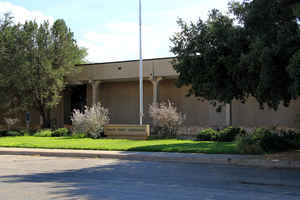Texas Counties
Texas is divided into two hundred and fifty-four counties, more than any other state. Texas was originally divided into municipalities, a unit of local government under Spanish and Mexican rule. When the Republic of Texas gained its independence in 1836, there were 23 municipalities, which became the original Texas counties. Many of these would later be divided into new counties. The most recent county to be created was Kenedy County in 1921. The most recent county to be organized was Loving County in 1931Martin County, Texas
Martin County Education, Geography, and History

Martin County is a county located in the state of Texas. Based on the 2010 census, its population was 4,799. Its county seat is Stanton. The
county was created in 1876 and organized in 1884. It is named for Wylie Martin, an early settler. Martin County is one of 30 prohibition, or
entirely dry, counties in the state of Texas.
Martin County is included in the Midland, TX Metropolitan Statistical Area.
Etymology - Origin of Martin County Name
Wylie Martin, an early settler in Texas
Demographics:
County QuickFacts: CensusBureau Quick Facts
Martin County History
Martin County is a county located in the US state of Texas. Its seat is Stanton. The county is named for Wylie Martin, an early settler
Handbook of Texas Online
Comanche Indians displaced Lipan Apaches in the region in the mid-eighteenth century and were in turn forced out
by the United States Army after the Civil War. Martin County was formed on
August 21, 1876, from Bexar County and named for Wylie Martin, one of Stephen F.
Austin's Old Three Hundred colonists. Martin
County was attached to Mitchell County for administrative purposes for five months and then attached to Howard
County until 1884, when the county was reduced to its present size and organized with Mariensfield (now Stanton) as
the county seat. The first white settlement in what is now Martin County was Grelton (later known as Mariensfield),
which was established in 1881 by John Konz and his family under the sponsorship of the Texas and Pacific Railway.
Railroad promotion was a key element in attracting settlers to West Texas. "It is emphatically the country for the
poor man," urged one railroad brochure. "No matter how poor a man may be, if he has health he may easily become the
possessor of independent wealth in a few years." In support of such optimistic forecasts the railroad started a
twenty-acre experimental farm at Grelton for wheat, barley, rye, and oats. The region was pleasing in appearance and
well watered by springs, including Mustang Pond, where United States Army officers had once observed Indians
watering 1,000 mustangs. "This beautiful country," said one pioneer, "was just a lush garden with green plums,
prairie chicken, and quail galore." In 1881 the Texas and Pacific line began service to its lands in the Martin
County area, which it sold to settlers for $1.50 to two dollars per acre. The drought of 1886 almost depopulated the
nascent community. Settlers planted grain, cotton, vegetables, vines, and orchards and hunted antelope, deer, quail,
and the few buffalo still remaining, to become self-sustaining. Cattle and,
especially, sheep were introduced in greater numbers in the mid-1880s to utilize range not already preempted by
Christopher C. Slaughter and others who had run cattle since 1877. Slaughter's
37,500 section Lazy S Ranch extended into Martin County and had its headquarters at Mustang Spring. By 1890, 3,316
cattle and 12,600 sheep were in the county; by 1900, however, sheep raising was clearly on the wane, while cattle
ranching had increased significantly. In 1890 only 663 sheep but 32,000 cattle were reported. Sheep farming would
not really become an important part of Martin County's economy again until the 1930s More at
William R. Hunt and John Leffler, "MARTIN COUNTY," Handbook of Texas Online (http://www.tshaonline.org/handbook/online/articles/hcm03),
accessed January 24, 2016. Uploaded on June 15, 2010. Published by the Texas State Historical Association.
Geography: Land and Water
As reported by the Census Bureau, the county has a total area of 916 square miles (2,371 km2), of which, 915
square miles (2,369 km2) of it is land and 1 square miles (2 km2) of it (0.09%) is water.
Neighboring Counties
Bordering counties are as follows:
- Dawson County (north)
- Howard County (east)
- Glasscock County (southeast)
- Midland County (south)
- Andrews County (west)
- Gaines County (northwest)
Education







